42 allergens required on food labels
Everything You Need to Know About Food Allergen Labeling In 2022 No. Single-ingredient foods that are major allergens or contain proteins derived from them must identify the food source (eg. all-purpose wheat flour) or use a "Contains" statement to list allergens. Note: 1. If you're using a "Contains" statement, place it immediately above the manufacturers, distributors, or packers statement. 2. Tree Nut - FoodAllergy.org 05.09.2017 · Tree nuts are one of the eight major allergens that must be listed in plain language on packaged foods sold in the U.S., as required by federal law, either within the ingredient list or in a separate “Contains” statement on the package. For tree nuts, the specific variety must also be identified on the package. This makes it easy to see if tree nuts are present in a food item.
Food Allergen Labeling and Consumer Protection Act of 2004 Mar 07, 2022 · (b) Effect on Other Authority.--The amendments made by this section that require a label or labeling for major food allergens do not alter the authority of the Secretary of Health and Human ...
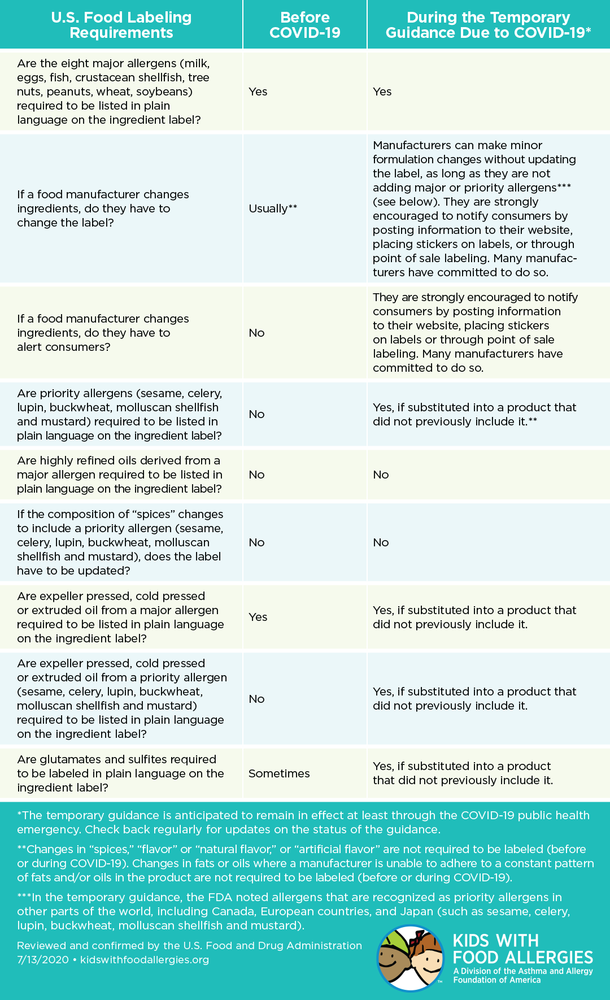
Allergens required on food labels
The Big 8 Food Allergens - The Food Institute 09.05.2020 · Soybean is another difficult food for the allergic consumer to avoid as it is used in many processed foods. Allergen Labeling. The Big 8 allergens must be declared on any processed food in accordance to the Food Allergen Labeling and Consumer Protection Act. Allergic consumers may accidentally encounter problem foods, as previously mentioned ... Food Allergy & Anaphylaxis | Food Labeling | Food Labels Only crustacean shellfish (e.g. crabs, shrimp, lobster, or crayfish) and not mollusks (eg. clams, mussels, scallops, or squid) are required to be labeled on packaged goods. The labeling law applies only to foods regulated by the FDA. Understanding the FDA Food Allergen Labeling Requirements - enKo Products Are We Required to List Allergens on Our Food Labels? Yes, manufacturers need to declare the presence of allergens in their product if it has any. It is required by law under the Food Allergen Labeling and Consumer Protection Act, which is simply known as "FALCPA." Food allergies occur when some types of food trigger an immune reaction.
Allergens required on food labels. Allergen labelling - Food Standards In February 2021, new plain English allergen labelling requirements were introduced for how certain foods known to be common allergens are declared. These changes will mean food allergen information is clearer and easier to find on food labels. Food businesses have three years to update their labels to meet the new requirements. Food labelling and packaging: Ingredients list - GOV.UK Allergens. You must highlight allergens on the label using a different font, style or background colour. You must also list them in the ingredients. The allergens you need to highlight and list ... Food Allergen Labeling: Helpful Hints To Manage "May Contain" Labeling ... Know the less common names for relevant food allergens. The eight most common food allergens are required to be listed as their common name, but less common allergens are not held to this same level of scrutiny. According to the FDA, " FALCPA identifies eight foods or food groups as the major food allergens. They are milk, eggs, fish (e.g ... PDF Allergen Labeling on Food Products - University of Minnesota Allergen declaration is required on products regulated by the Food and Drug Administration (FDA), U.S. Department of Agriculture (USDA), and state regulatory authorities (e.g., Mississippi Department of Agriculture and Commerce, Mississippi State Department of Health, Mississippi Department of Marine Resources).
Food Labels: Read It Before You Eat It! - American Academy of Allergy ... Ingredients of these most common eight allergens must be labeled with clearly recognized English names of the food source as listed above. The "contains" statement is "voluntary", but if used, must include ALL of the allergenic ingredients from the list of eight allergenic sources as described in item 14 of the 2006 guidance document. How to Read a Food Label - FoodAllergy.org Starting Jan. 1, 2023, allergen labeling of sesame will be required under the Food Allergy Safety, Treatment, Education and Research (FASTER) Act of 2021. Ingredients and manufacturing processes can change without warning. Make a habit of carefully reading labels to ensure you avoid any potential allergens. "May Contain" Statements Allergen declarations, warnings, and advisory statements on food labels ... The allergens that must be declared are: peanuts almonds Brazil nuts cashews hazelnuts macadamias pecans pine nuts pistachios walnuts crustacea molluscs fish milk egg gluten (that is found in wheat, rye, barley, oats, spelt, and triticale) wheat soy sesame lupin sulphites (must be listed if added at 10 (or more) milligrams per kilogram of food) Food Labeling - FoodAllergy.org Food labels need to be accurate and truthful to help people with food allergies stay safe. Issues can arise when companies change the way they manufacture a food—or when they occasionally make mistakes. As of 2016, the U.S. Food and Drug Administration (FDA) has the authority to initiate allergen-related recalls.
Allergens: Where Food Safety and Labeling Intersect In passing FALCPA, Congress noted that eight major foods or food groups—milk, eggs, fish, crustacean shellfish, tree nuts, peanuts, wheat, and soybeans—account for 90 percent of food allergies. These findings also cited a 1999 FDA review of randomly selected baked goods, ice cream, and candy showing that 25 percent of the sampled foods ... Food labelling and allergens | AFSA "Common allergen" is defined as: egg, cow's milk, crustaceans and molluscs, fish, peanuts, soybeans, tree nuts and any significant cereals, as well as ingredients derived from these foodstuffs that has retained its allergenicity in the final product. Goats milk shall, according to R.146, be labelled in the same manner as common allergens. Food Allergen Labelling - Canada.ca The Food and Drug Regulations require that most prepackaged foods carry a label and that the ingredients appear on labels in decreasing order of proportion. However, some ingredients used in food products which were previously exempt from declaration in the list of ingredients, (e.g., components of margarine, seasoning and flour) will now be required to appear on food labels also. Allergen Labeling Requirements — FDA Reader Packaged foods for sale in the US which were labeled after January 1st, 2006 must have an allergen statement. This includes single-ingredient packaged foods (i.e. canned tuna) Fresh fruits and vegetables do not require an allergen statement.
How to read food labels | healthdirect Sugar: Sugar is a type of carbohydrate. It is better to choose healthier carbohydrates and to limit foods that are high in added sugars. Fibre: High fibre foods such as wholegrain bread and cereals improve digestion and help you to feel full. Sodium: This tells you how much salt the product contains. Eating too much salt is linked to high blood pressure and can lead to heart disease, …
Packaging and labelling | Food Standards Agency The following information must appear by law on food labels and packaging: Name of the food. The name of the food must be clearly stated on the packaging and not be misleading. If there is a name prescribed in law this must be used. In the absence of a legal name, a customary name can be used. This might be a name that has become commonly ...
Allergen guidance for food businesses | Food Standards Agency 14 allergens. Food businesses need to tell customers if any food they provide contain any of the listed allergens as an ingredient. Consumers may be allergic or have intolerance to other ingredients, but only the 14 allergens are required to be declared as allergens by food law.
Food allergy and intolerance | Food Standards Agency There are a number of ways in which allergen information can be provided to you. This can depend on the type of food you buy and the type of food business you order from. Prepacked food. The 14 allergens must be emphasised within the ingredients list of pre-packed food or drink. This can be done, for example, by using bold, italic or coloured ...
TTBGov - Allergen Labeling consistent with the provisions of the food allergen labeling and consumer protection act of 2004, falcpa, the interim rule defines a "major food allergen" to mean any of the following: milk, egg, fish (for example, bass, flounder, or cod), crustacean shellfish (for example, crab, lobster, or shrimp), tree nuts (for example, almonds, pecans, or …
Allergen labelling for food manufacturers 14 allergens If your product contains any of the main 14 allergens as an ingredient or processing aid, it must be included on the label. The 14 main allergens are: celery cereals containing gluten...
Food Allergen Labelling | Laws. Types Of Labels, Effectiveness There are 14 food allergens that you need to be aware of and these ingredients must be clearly marked and declared on any food offered for sale. Nuts (almonds, hazelnuts, walnuts, pecan nuts, sesame, Brazil nuts, pistachio, cashew, Macadamia or Queensland nut). Peanuts. Eggs including egg derived substances such as albumen.
Food Allergies | FDA - U.S. Food and Drug Administration Jun 23, 2022 · People with food allergies should read labels and avoid the foods they are allergic to. The law requires that food labels identify the food source of all major food allergens used to make the food.
Food Allergies | Food Safety and Inspection Service A food allergy is a potentially serious response to consuming certain foods or food additives. For those who are sensitive, a reaction can occur within minutes or hours, and symptoms can range from mild to life threatening. The eight leading causes of food allergies are milk, eggs, fish, shellfish, tree nuts, peanuts, wheat, and soybeans.
Regulations to enhance the labelling of food allergens, gluten and ... Although standardized alcoholic beverages such as beer and wine are not required to have a list of ingredients, if wine or other standardized alcoholic beverages, (except standardized beer) contain a food allergen, gluten source or added sulphites (at 10 ppm or more) then the food allergen, gluten source or sulphites will need to be declared on any part of the label using either …
Food Labelling for the Food Allergic Consumer | FARRP | Nebraska This means that a food ingredient which can cause a reaction in food hypersensitive consumers may be in a food without being declared on the ingredients label. To help ensure this does not happen, the Food Allergen Labelling and Consumer Protection Act (FALCPA) was passed in the U.S. in 2004. This Act requires the presence of the eight major ...
Must allergens be declared on labels? - USDA Must allergens be declared on labels? Jul 17, 2019 Knowledge Article Yes. All food products containing two or more ingredients are required by federal regulations to bear an ingredients statement listing all ingredients by common or usual name in descending order of predominance.
Food Allergen Labeling Law Requirements and Exceptions - Verywell Health Tree nuts (e.g., pecans and almonds) Peanuts Wheat, and Soybeans According to the FDA, these are the allergens that cause the most problems in the U.S. Foods that contain these allergens need to list them in the ingredients label on the package. In addition, manufacturers must use use the "common or usual name" of the allergen.
Allergens- Voluntary Labeling Statements | Food Safety and Inspection ... Issue Date June 2013. This guidance document assists firms formulate voluntary labeling statements regarding the possible presence of allergens in products. Label review for meat, poultry, and egg products is required by statute at 21 USC 607 (d), 456 (c), and 1036 (b), respectively. Under the Federal Meat Inspection Act (FMIA), the Poultry ...
Allergen Labeling on Food Products - Mississippi State University Allergen declaration is required on products regulated by the Food and Drug Administration (FDA), U.S. Department of Agriculture (USDA), and state regulatory authorities (e.g., Mississippi Department of Agriculture and Commerce, Mississippi State Department of Health, Mississippi Department of Marine Resources).
FALCPA identifies eight foods or food groups as the major food allergens. They are milk, eggs, fish (e.g., bass, flounder, cod), Crustacean shellfish (e.g., crab, lobster, shrimp), tree nuts (e.g.,...
Label Reading for Food Allergens | Gordon Food Service All foods regulated by the Food and Drug Administration (FDA) that contain a major food allergen are required by law to list the allergen on the product label. Major food allergens = milk, wheat, egg, peanuts, tree nuts, fish, crustacean shellfish, and soy. Food Allergen Labeling and Consumer Protection Act. The law that dictates this is the ...
TTBGov - Major Food Allergen Labeling TTB has published an interim rule, effective July 26, 2006, allowing the voluntary labeling of major food allergens on the labels of wines, distilled spirits, and malt beverages. The regulatory provisions allowing the voluntary labeling of major food allergens are contained in T.D. TTB-53, published in the Federal Register on July 26, 2006.
Understanding the FDA Food Allergen Labeling Requirements - enKo Products Are We Required to List Allergens on Our Food Labels? Yes, manufacturers need to declare the presence of allergens in their product if it has any. It is required by law under the Food Allergen Labeling and Consumer Protection Act, which is simply known as "FALCPA." Food allergies occur when some types of food trigger an immune reaction.
Food Allergy & Anaphylaxis | Food Labeling | Food Labels Only crustacean shellfish (e.g. crabs, shrimp, lobster, or crayfish) and not mollusks (eg. clams, mussels, scallops, or squid) are required to be labeled on packaged goods. The labeling law applies only to foods regulated by the FDA.
The Big 8 Food Allergens - The Food Institute 09.05.2020 · Soybean is another difficult food for the allergic consumer to avoid as it is used in many processed foods. Allergen Labeling. The Big 8 allergens must be declared on any processed food in accordance to the Food Allergen Labeling and Consumer Protection Act. Allergic consumers may accidentally encounter problem foods, as previously mentioned ...
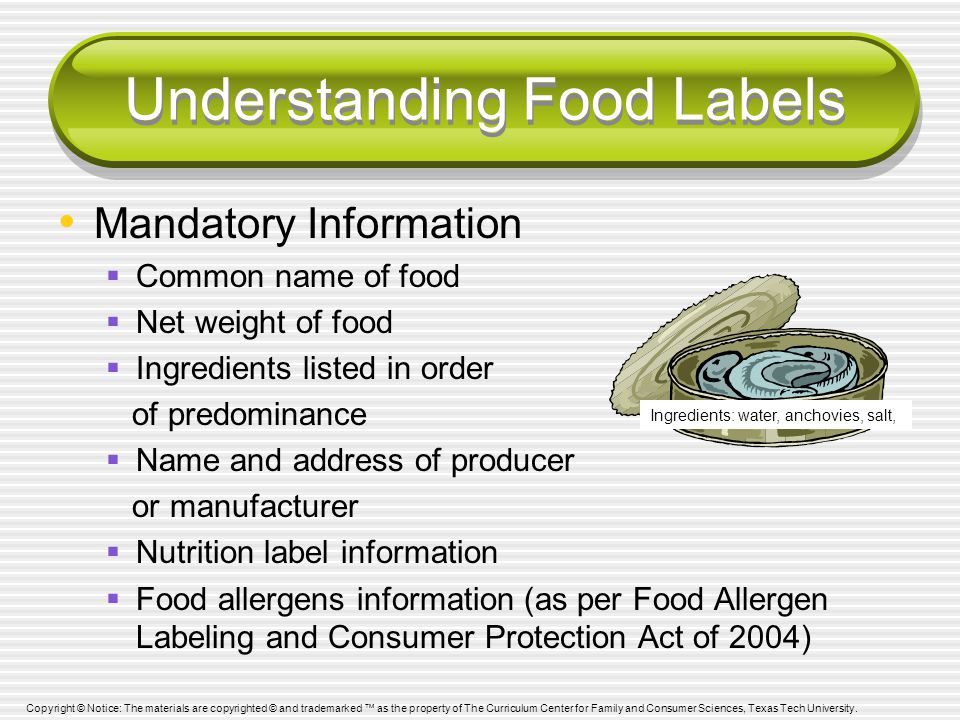
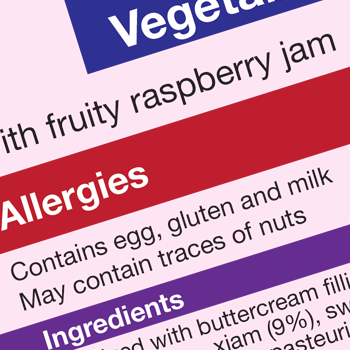
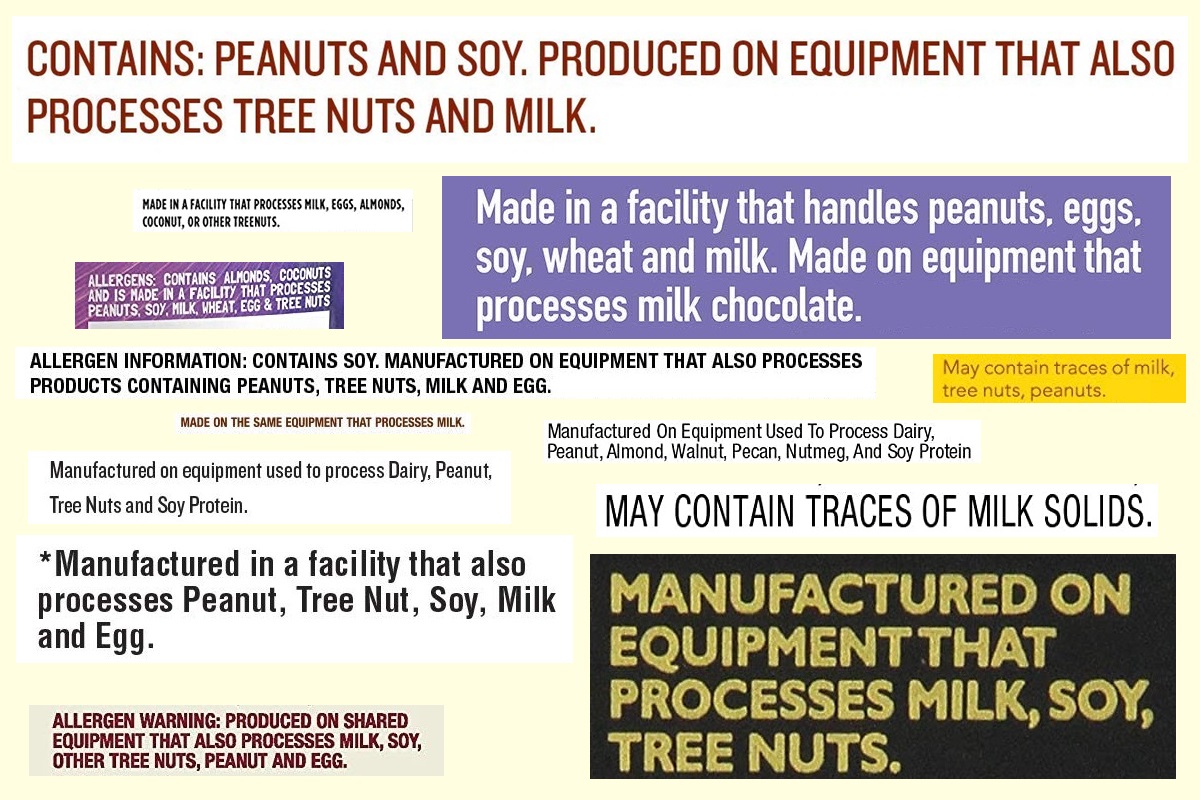
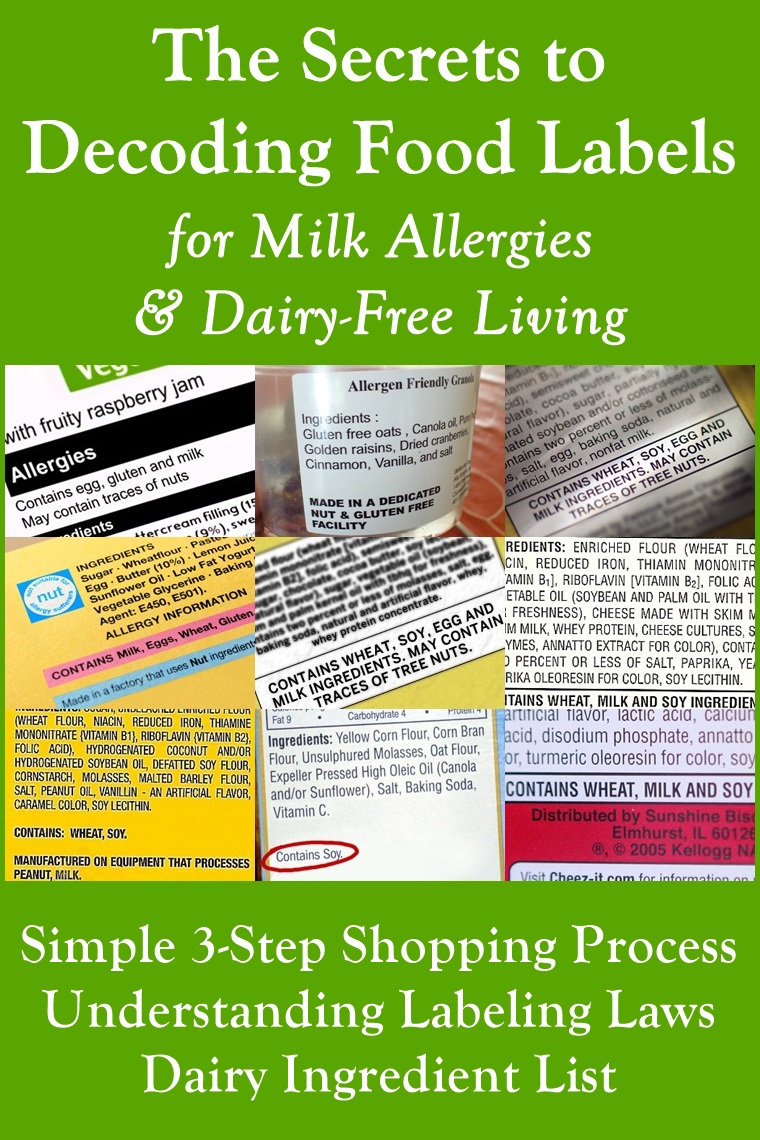




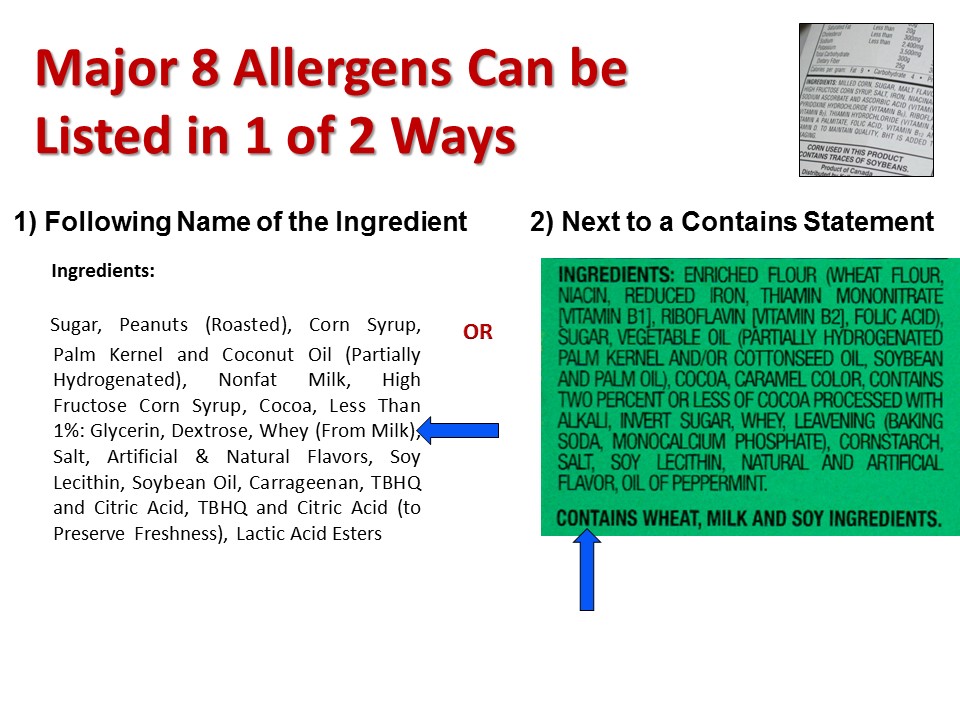




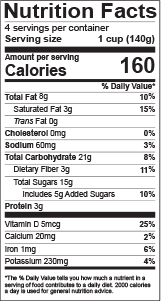

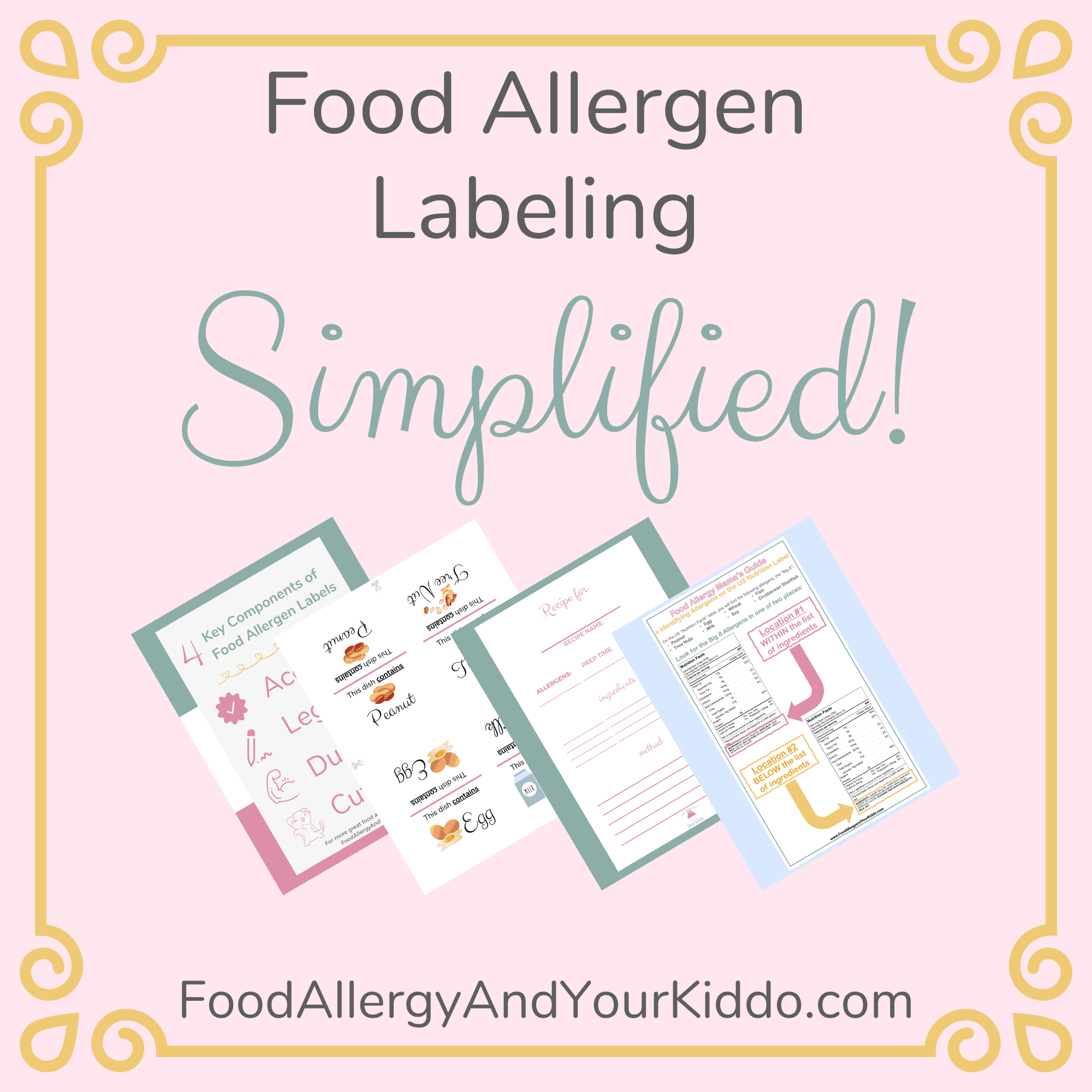
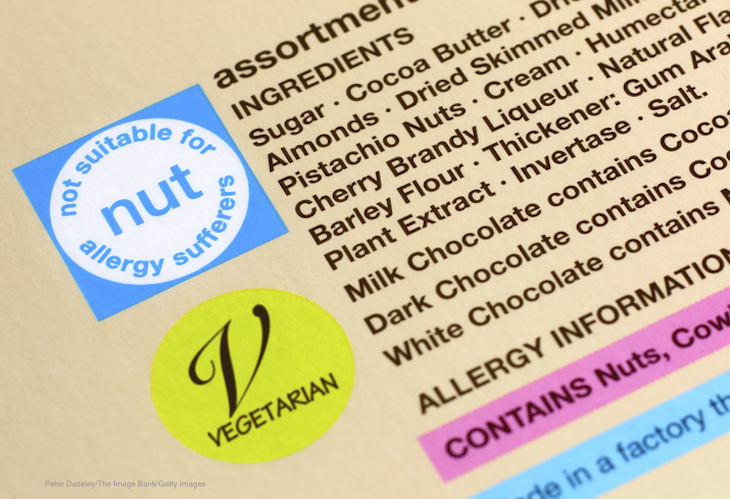


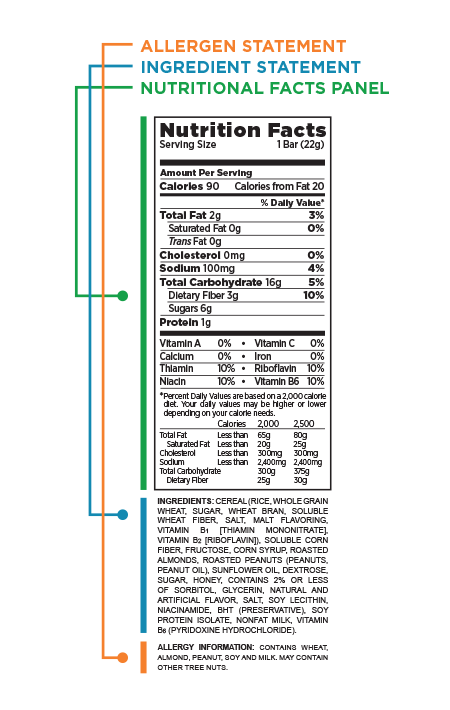

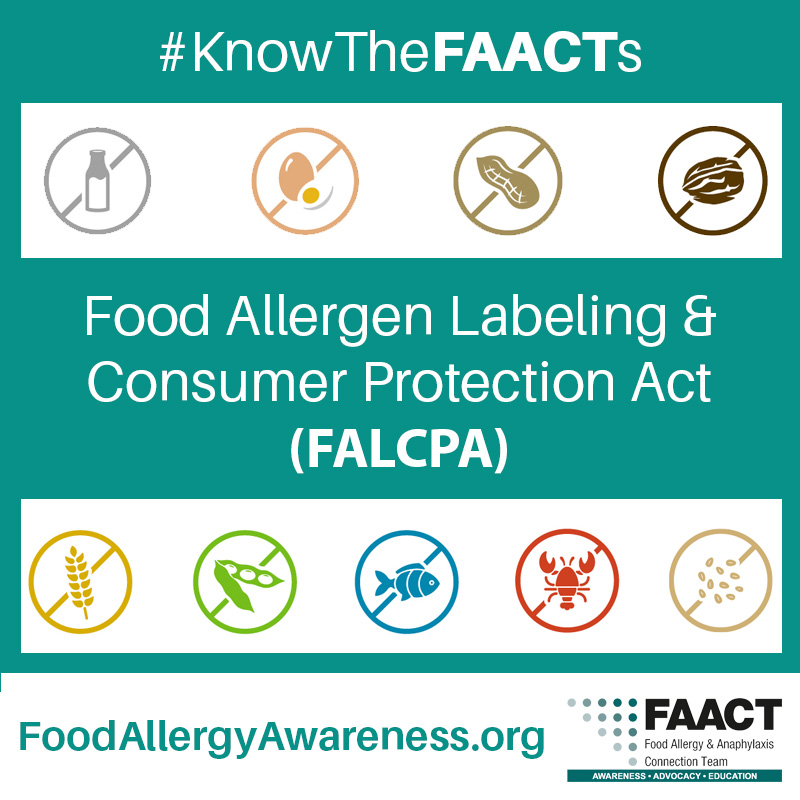


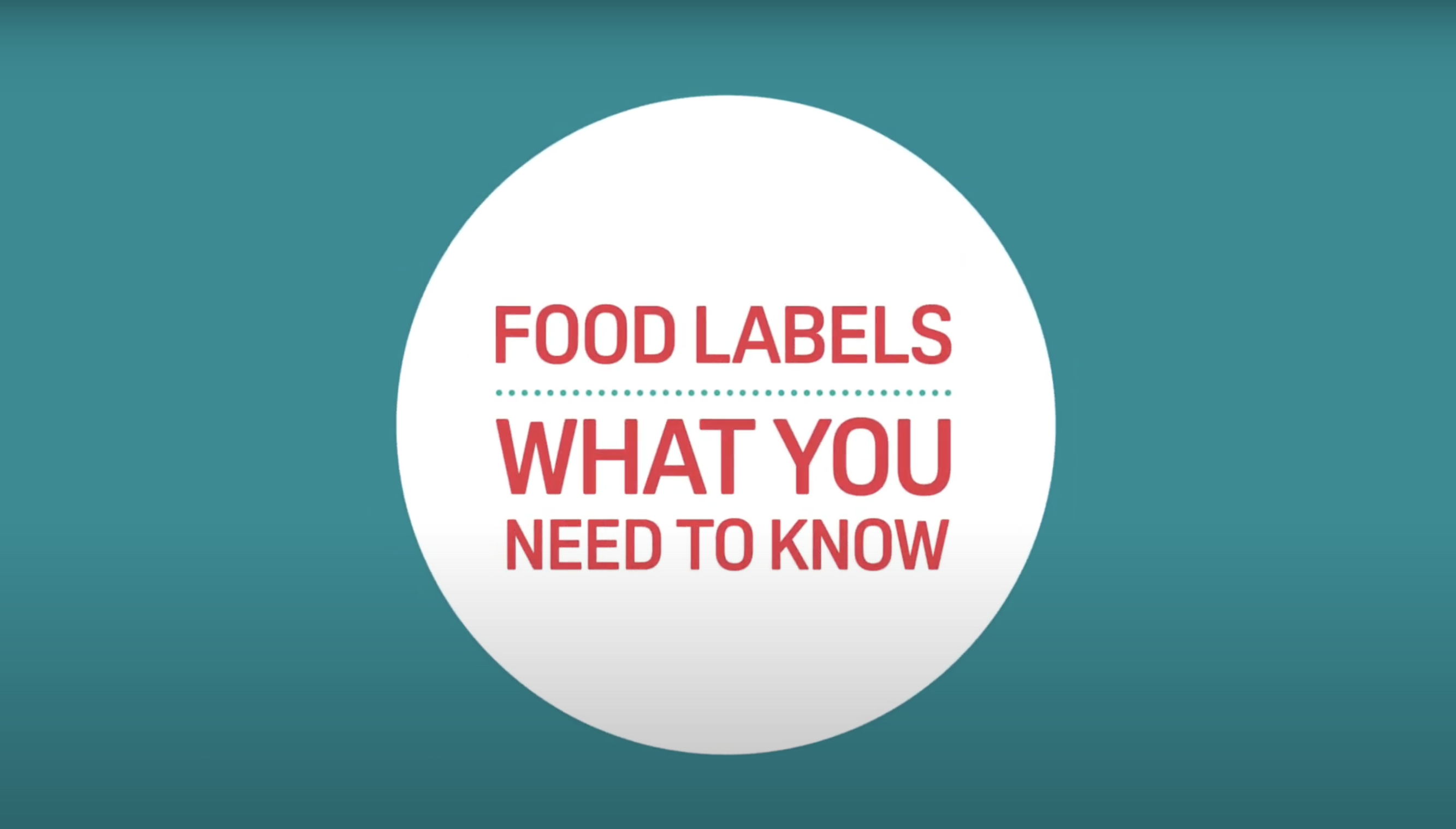


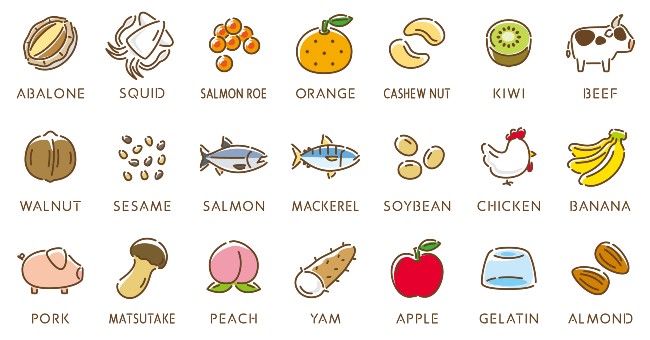
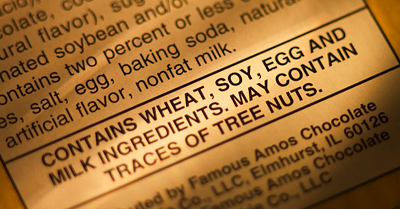
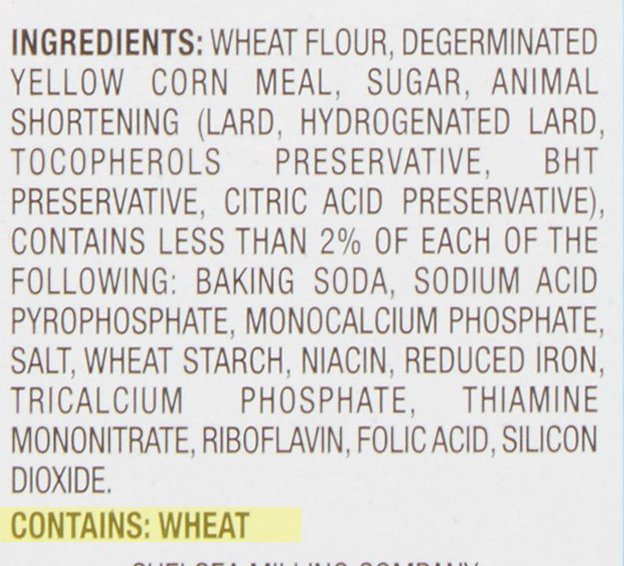

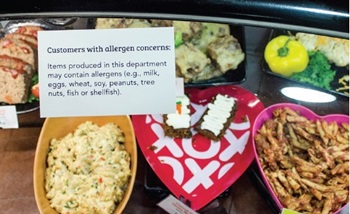
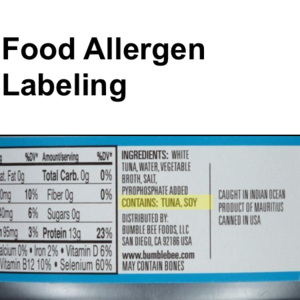
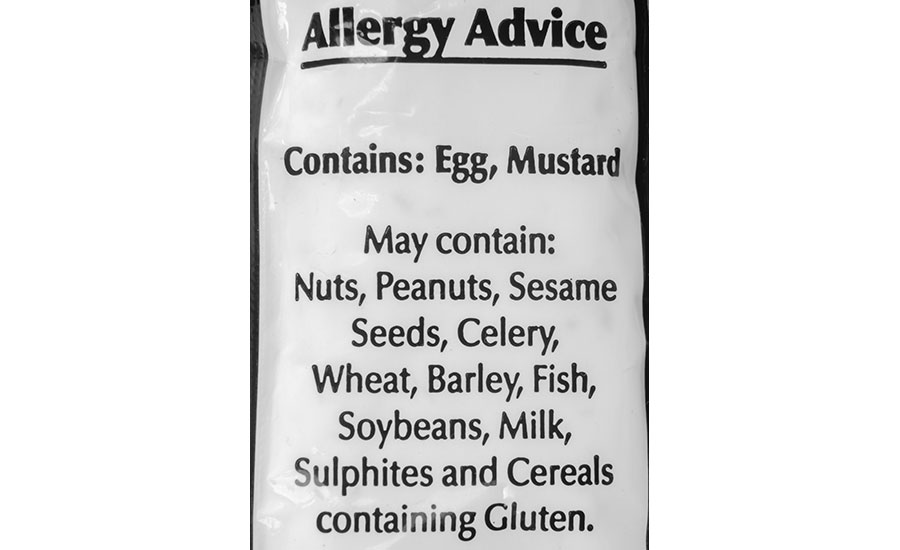

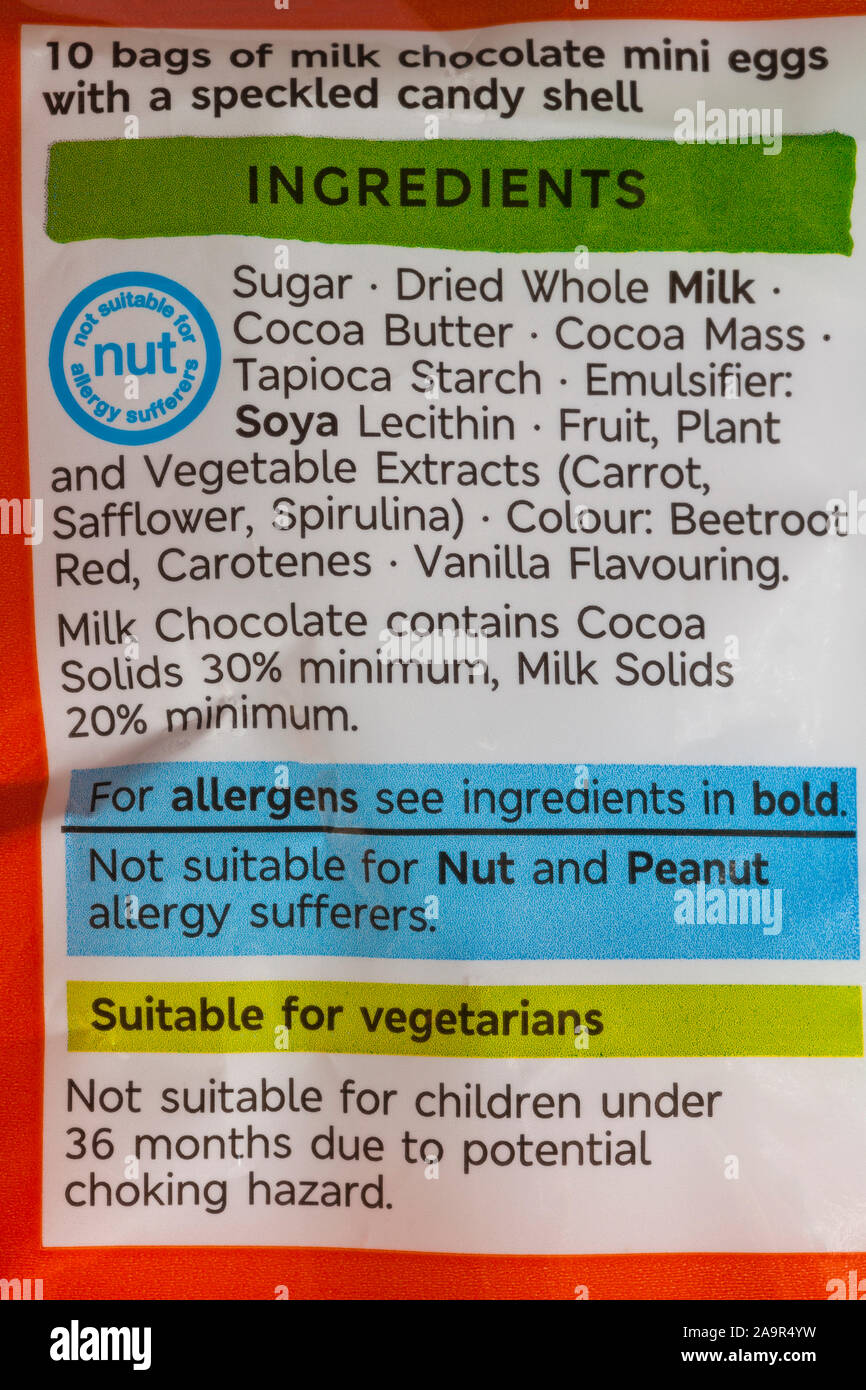
/GettyImages-98904622-5671b69a5f9b586a9e197e08.jpg)

Post a Comment for "42 allergens required on food labels"